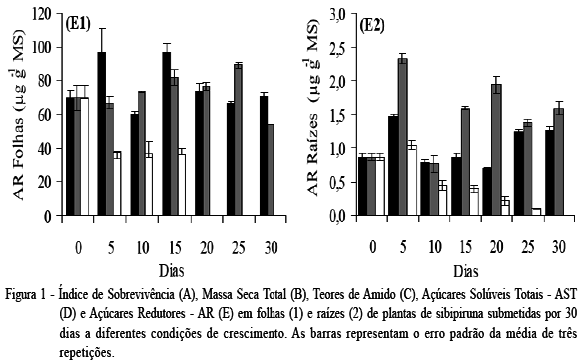Plants in their natural environment are subject to adverse conditions, and the stress periods can be short or long. Some species develop mechanisms that make them bear the adverse conditions, allowing their survival. The aim of this study was to evaluate the anatomic and physiological responses in the initial development of Sibipiruna plants submitted to hypoxia. Plants with three to four leaves fully expanded were subjected to three treatments: plants without flooding, flooded on roots and totally flooded. Evaluations were carried out in the starch, total soluble sugars and reducing sugars levels in the leaves and roots collected every five days, for 30 days. Anatomical characteristics were evaluated 15 days after the beginning of each treatment. The largest reduction in starch level in leaves and in roots was observed in plants completely flooded. For total soluble sugars and reducing sugars were observed behavior similar to that achieved in starch However, the plants which had flooded roots, in some periods of assessment, had levels, mainly in the roots, higher than the plants without flooding. These plants also showed higher stomatal density than the other treatments. For the thickness of the cortex and the cylinder vascular roots, a reduction was observed for the flooded treatment, which completely flooded plants had a higher apoplastic barrier imposed by thickening in phi, which is characterized by the formation of septa in cells near the endodermis.
Caesalpinia peltophoroides; flooding; carbohydrates; phi thickenings







